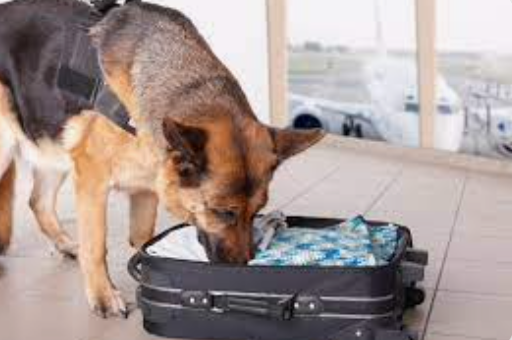
How accurate are drug detection dogs?
Dog detection dogs are widely used at airports, train stations and at major events. They were featured on television and in films and occasionally celebrated in the media when they retired. But how accurate are drug detection dogs?
Belgian Malinois are becoming increasingly popular in drug detection, making German Shepherds and Belgian Malinois the most popular breeds for drug detection. Labrador Retrievers, Terriers (e.g. Fox, Welsh and Jack Russell) and English Springer Spaniels are also used.
RELATED: Most Popular Marijuana Flavors
Training a dog to detect drugs requires establishing a connection between the dog's training toy and the smell of controlled substances, usually cocaine, heroin, methamphetamine and marijuana. When the dog smells the smell of the intended anesthetic, he thinks he has found his toy. Dogs do not realize that they are smelling anesthetics and not the toy itself. Once this connection between the smell of anesthetics and the toy is established in the dog's memory, he is taught to perform a specific behavior to signal to the handler that he is the one smell of what he thinks is his toy. This demonstration is commonly referred to as an “alarm.”
So how effective are they? It's a mixed picture, and all the studies show that they are not always accurate. Law firms like Keller Law Office in Minnesota claim that drug-sniffing dogs are not very accurate. They say several studies showed alarmingly high error rates, with some results exceeding 50 percent.
A study Polish researchers from the Department of Animal Behavior at the Institute of Genetics and Animal Breeding of the Polish Academy of Sciences found that dogs correctly identified hidden medications on average 87.7% of the time, while incorrect information occurred in about 5% of the cases. and in 7% of cases, the dogs were unable to find the hidden substances.
RELATED: Most Popular Marijuana Flavors
Photo by Deonny Rantetandung via Unsplash
The group found that German Shepherds were the top narcotics dogs, while terriers, often used because of their small size, performed poorly. Dogs performed better indoors than outdoors, while familiarity with the space had no significant influence. The hardest part was finding drugs outdoors or in a car. These drug-sniffing dogs were only 58% accurate when searching a car.
Some medications can also leave residual odors that dogs cannot distinguish from the actual presence of the substances, such as cannabis buds and hashish the strongest By smell, all dogs signaled the presence of hashish one day after it was removed from the site, and 80% did so after 48 hours.
RELATED: No, drug-sniffing dogs can't distinguish between marijuana and hemp
In the United Kingdom, revealed that drug detection dogs had wrongly detected illegal substances on customers in almost 75% of the 95,000 searches carried out since 2012. While they conduct a review, the practice will continue.
Police dogs and their effectiveness are often viewed as extremely precise and almost infallible, which is not always borne out by data. The good news is that K9s are also immune to racial and other biases. Law enforcement agencies worldwide rely on their keen sense of smell to detect hidden narcotics.
Another option is to detect explosives, but dog teams were alerted to the training sample in both experiments (alert rate = 100%), indicating a strong response to the training sample. On average, dog teams were alerted to the 30g subsample of seized explosives in 10 of 14 trials across all dogs, for an alert rate of 71.43%. So still not the best score, but better than average.
The most successful dogs are trained to detect plant pests and diseases. A U.S. Department of Agriculture study found that these dogs identified trees infected with citrus greening disease with 99% accuracy; They were able to detect an infection just two weeks after the outbreak. Maybe it would be a better use?

Post a comment: